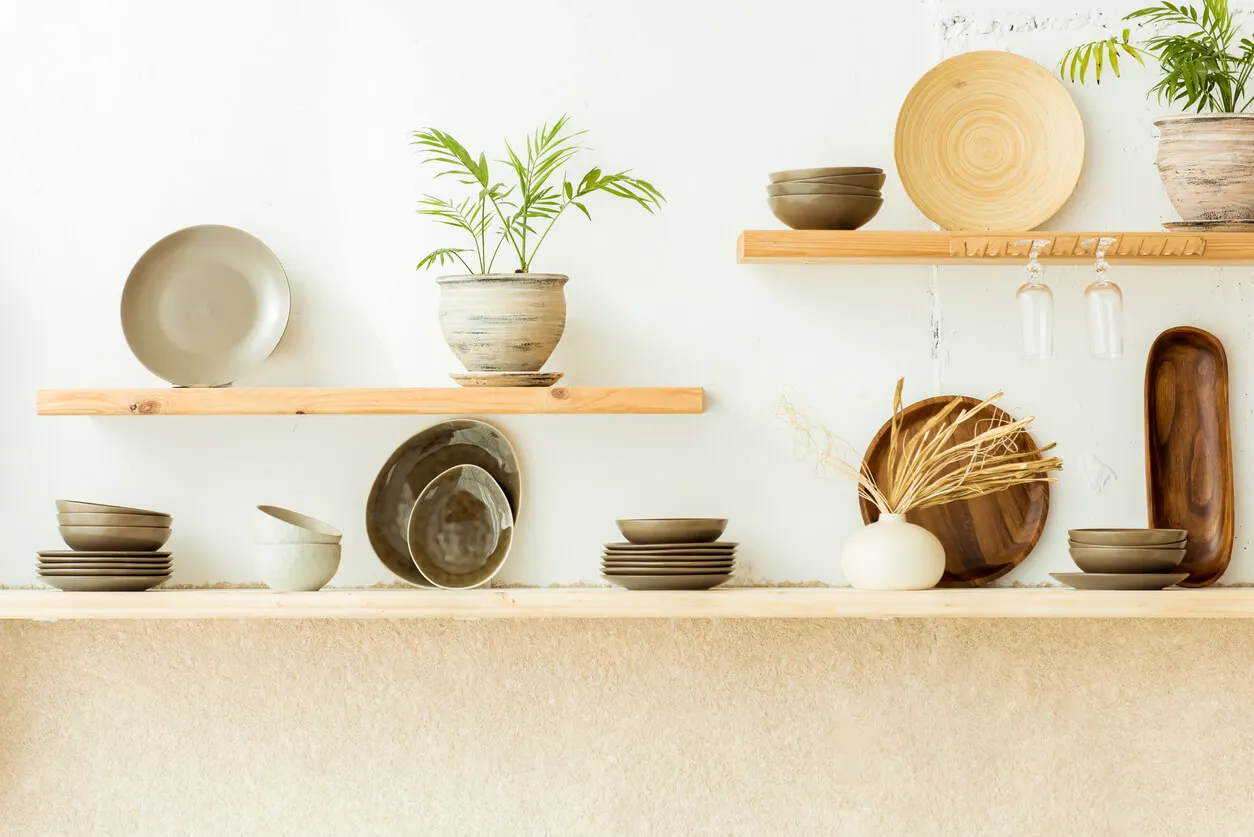How to Decorate with a Shaker Style in Your Home

Without giving itself fully to austerity, as it happened in its beginnings, the Shaker style has made a return in the field of current decoration, which highlights appealing only to what is necessary to build warm and beautiful spaces.
This trend is constantly increasing the number of its followers due to its proposal to transform the traditional into something distinguished. But how was this fashion born, and how does it fit in your home? Read on to find out!
What is the shaker style?
The United Society of Believers in the Second Appearing of Christ gave birth to the Shaker community. Its history gained momentum in 1747, when the leader of the clan, Ann Lee, emigrated with a group of followers from England to the United States.
There, they dedicated themselves to communal living, promoting the simplicity of the environment that today stands out as one of the most striking models in interior decoration. Furthermore, the non-profit association Hispania Nostra (HN) comments that the Christian movement laid a strong foundation for the beautification of any area to respond to Shaker principles today.
Some of the key Shaker principles include minimalism and purity.
As the Art and Architecture Thesaurus emphasizes, the Shakers implemented the artisan method, made their own furniture, and furnished their homes with as few objects as possible. Thus, they didn’t need ostentatious interior design, but they were excellent cabinetmakers who turned rustic wood into beautiful and useful furnishings.
That’s what the modern Shaker style is all about. Therefore, it’s about embellishing a space using the least amount of things and opting for quality craftsmanship.

What you should take into account to adopt the Shaker style
Sticking to the initial philosophy, the Shaker style gives handcrafted objects the quality of becoming pieces of design. According to a thesis published by the University of Belgrano, the objective is to increase the visual level without resorting to merely decorative elements.
Therefore, to implement the trend in your home, it’s essential to keep in mind the following characteristics:
- Minimalism: it’s all about simplicity.
- Stylism: this is about giving priority to furniture with defined lines.
- Spaciousness: this is so that the rooms are not crowded with furniture.
- Functionality: this is not about being expensive or showy, but being useful.
- Discretion: this is mainly with the colors, which must belong to a sober palette.
You may also like to read: How do Different Colors Affect Your Feelings?
Tips to adapt the decoration of your home to the Shaker style
Pay attention to the details that provide serenity and fit your tastes to incorporate them in the interior design. Here are some ideas to personalize your home with this unique style.
Welcome wood
Wood is the protagonist in the Shaker style. So, look for furniture made of cherry, pine, maple, or any bark that can be carved, that has fine handmade details and that stands out for its durability.
Doors, shutters and floors made of this material, varnished or polished, are also typical of the style.
Opt for colonial colors
The color palette associated with the Shaker theme evokes the sky, water, and other natural elements. Then, blue, green, ocher, gray, and shades of white sympathize with the trend. In the case of the latter, it’s usually recommended for meeting rooms or the kitchen area, especially when they’re quite large.
Ideally, the range should match the wood, which is the main resource of the furniture. In short, the paint on the walls should convey serenity and complement the natural light.
Minimalist thinking
Respect the premise of “less is more” and try to have as few objects as possible, and distribute them in strategic places. Therefore, if the space is small, it will appreciate that you know how to make the most of it!
Read about: The Declutter Method: What It Is and How It Helps
Use few accessories
Having few pieces of furniture means easy cleaning. Thus, the Shaker style promotes permanent hygiene both in the case of the fixtures and the house. It does not accept the accumulation of dust or stains.
Neatness is not negotiable when it comes to this style.
Also, there should be no tablecloths, curtains, linings, or any fabric that saturates the environment. Authenticity is in the nudity of the furnishings and walls.
Patchwork and wool or cotton rugs are allowed, as long as they’re scarce. So, forget the little tables full of ornaments and vases!

Focus on functionality
If it’s Shaker, it can bring elegance, but above all, it’s about functionality. We’re talking about things that are light and easy to move.
It would be nice if some furniture models have wheels or are made to measure. This way, you can move it to any corner without so much effort.
An extra example of functionality is to attach coat racks to the wall to hang hats, hats, keys, and coats. Similarly, instead of having big armchairs in the room, consider armchairs or rocking chairs, combined with a discreet sofa.
Do away with auxiliary furniture and built-in closets. This advice is essential to preserve order and unclutter your spaces.
The impact of a Shaker style on modern design
The magazine of the Centro de Estudios en Diseño y Comunicación de Argentina highlights the social commitment that the Shaker discipline brings from its beginnings to modern times. Consequently, they refer to detaching from ornaments and making way for practicality.
In this way, the movement born in another century shakes hands with current interior design, by joining elegance and utilitarianism for everyday life in a single concept. So, would you like to implement the trend?
All cited sources were thoroughly reviewed by our team to ensure their quality, reliability, currency, and validity. The bibliography of this article was considered reliable and of academic or scientific accuracy.
- Burgueño Bermejo B. El peculiar estilo shaker. Hispania Nostra. España; 2020. https://deautor.hispanianostra.org/el-peculiar-estilo-shaker/
- Feroglio L. La silla, el interiorismo y sus vinculaciones. Las tesinas de Belgrano. Universidad de Belgrano. Argentina; 2015. http://190.221.29.250/bitstream/handle/123456789/8715/tesina%20864%20feroglio.pdf?sequence=1&isAllowed=y
- García de la Cárcova A, Girod G, Petrocchi I. Migraciones en el diseño de mobiliario con perspectiva histórica. Siglos diecinueve y veinte. Cuadernos. Centro de Estudios en Diseño y Comunicación. Núm. 134. pp. 53-59. Argentina; 2021. https://dspace.palermo.edu/ojs/index.php/cdc/article/view/5013/6666
- Historia de los Shakers. Servicio de Parques Nacionales. Estados Unidos. https://www.nps.gov/articles/history-of-the-shakers.htm#:~:text=The%20United%20Society%20of%20Believers,the%20formation%20of%20Shaker%20beliefs.
- Shaker. Tesauro de Arte y Arquitectura. Chile. https://www.aatespanol.cl/terminos/300022047
This text is provided for informational purposes only and does not replace consultation with a professional. If in doubt, consult your specialist.








